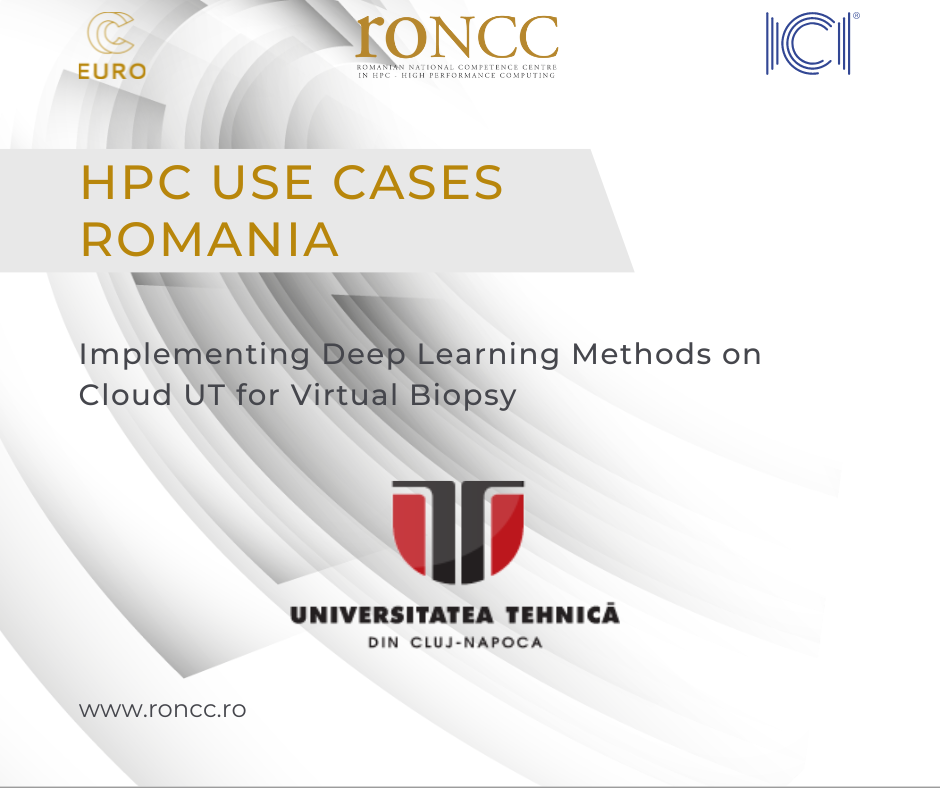Call for Applications: BioExcel Workshop Balkan Edition
BioExcel organizes the BioExcel Workshop Balkan Edition, a two-day hybrid event designed to inspire and empower early-stage researchers passionate about biomolecular modeling and simulation.

High-Performance Computing can be employed for various purposes across multiple industries. HPC solutions can be deployed on-premises, at the edge, or in the cloud. To better understand how HPC solutions are used in Romania, we have put together a list of use cases, each with a different application.
The first article presented how PRO SYS and The National Research and Development Institute for Gas Turbines COMOTI optimized ANSYS and other simulation software for aeronautical engineering on HPC with BeeGFS file system. The second one was about PRO SYS and CAELynx Europe, referring to how using the HPC cluster opens up new business opportunities.
And this article is about The Technical University of Cluj-Napoca Implementing Deep Learning Methods on Cloud UT for Virtual Biopsy.
The Technical University of Cluj-Napoca, an “Advanced Research and Education” awarded university, is today a tertiary education institution with a long-standing tradition and national and international recognition.
The Technical University of Cluj-Napoca comprises twelve faculties in the two academic centres, Cluj-Napoca and Baia Mare, and programme locations in Alba-Iulia, Bistrita, Satu Mare, and Zalau. The educational offer, aligned to the Bologna system, includes bachelor's, master’s, and doctoral programs and life-long learning programs.
Research is the main priority at the Technical University of Cluj-Napoca. There are numerous research structures in all university faculties, from groups and laboratories to research centers and platforms.
Open research directions are oriented towards global priorities and perspectives: from Information and communications technology to Renewable Energy and Ecology; from superconductivity, spintronics, and nanomaterials to management and robotics; from mechatronics and electrical engineering to the automobile and the home of the future, or to urbanism and society.
Technical/scientific Challenge:
The virtual biopsy is meant to replace the classic biopsy (which is an invasive method of taking and analyzing anatomical tissue samples), through advanced Artificial Intelligence and Computerized Imaging methods, which are non-invasive and with a quick (quasi-instant) response, thus eliminating in the totality of the risk of triggering metastases presented by the classic biopsy.
The scientific-technical challenge is that the virtual biopsy requires a large volume of data, the goal being to run complex methods such as convolutional neural networks and to minimize the training time and their evaluation. It is what practically requires the use of HPC infrastructures both in order to train the involved neural networks and to establish the diagnosis and staging of the disease/tumor.
The solution was to run these networks on the Cluj-Napoca Technical University Cloud.
Business/scientific impact:
Description of the current situation:
In the classical approach, the accuracy is not good enough, and it is difficult to work with big data in order to assure the necessary accuracy.
How using HPC is improving or is expected to improve it:
Using HPC, first of all, the time saved is relevant: 24-48 hours for the HPC method versus 7 days for the classical method. On the other hand, using the HPC-based method it is possible to work with big data collections, which guarantees accuracy due to the deep learning approach.
Benefits: